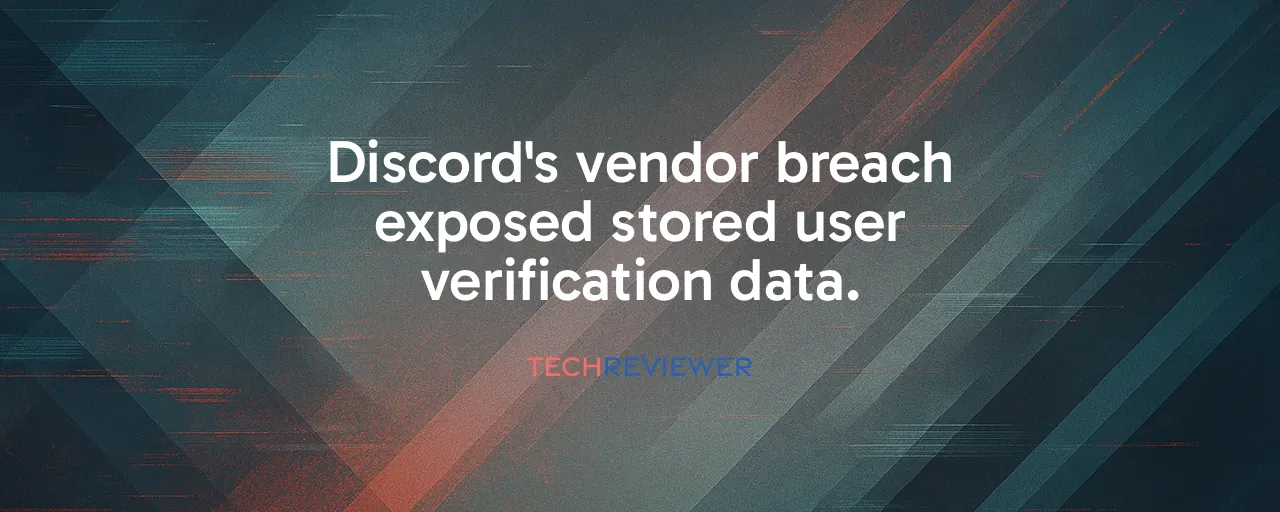A Wake-Up Call for Online Platforms
Discord announced a massive data breach in October 2025. Hackers, part of the Scattered Lapsus$ Hunters group, stole 1.5 terabytes of data, including 2,185,151 government-issued identification photos that users had submitted through customer support for age verification appeals. Names, emails, IP addresses, and partial billing details were also exposed. This security incident revealed significant issues with how platforms handle sensitive identity data. With 200 million monthly active users, Discord's breach raises questions about the safety of age verification systems now mandated by laws like the UK's Online Safety Act.
The incident's impact intensified because Discord's policies state that ID documents and video selfies are deleted immediately after age verification, with facial selfies never leaving the user's device. However, the breach revealed that documents submitted through customer support appeals were retained in Zendesk, longer than users expected based on public assurances. Users now face potential identity theft risks for years to come, since government-issued IDs cannot be reset like passwords.
When Vendors Become Weak Links
The Discord breach resulted from hackers targeting Zendesk, a third-party customer service provider handling support tickets and trust operations. This supply chain attack strategy is increasingly used by groups like Scattered Lapsus$ Hunters, who also compromised TransUnion in July 2025, exposing data of 4.4 million Americans. These incidents demonstrate platforms' reliance on external vendors and how vulnerabilities in one link can compromise entire security chains.
Similar to the AU10TIX breach in June 2024, where exposed login credentials allowed hackers to access ID documents used by platforms like TikTok and X, Discord's case underscores a critical lesson: outsourcing sensitive tasks doesn't eliminate platform responsibility. When vendors experience security failures, users suffer the consequences. This situation highlights the need for platforms to implement stricter oversight of partners, including tighter access controls and regular security audits, to prevent third-party systems from becoming easy targets for attackers.
Balancing Child Safety With User Privacy
Age verification requirements stem from a genuine need to protect children online. Laws like the UK's Online Safety Act, effective since July 2025, and Australia's upcoming social media ban for users under 16 demand platforms verify user ages to block harmful content. Discord implemented facial age estimation and document verification through vendors like k-ID and Veratad to comply. These systems aim for speed and accuracy, with Yoti's facial technology reporting over 99 percent accuracy for identifying teens under 21. However, the Discord breach illustrates a serious risk: collecting identification creates data repositories attractive to hackers.
Privacy advocates consistently warn that these systems become targets for attackers, noting that stolen IDs lead to lifelong fraud risks. Identity theft caused $12.7 billion in losses in the US during 2024. Meanwhile, child safety groups maintain that age verification is essential to shield minors from harmful content. Resolving this tension requires balancing robust child protection with privacy preservation. Privacy-preserving systems that avoid storing IDs could offer solutions, though regulators have not yet fully adopted such approaches.
Lessons From Discord and Beyond
Discord's breach provides important insights. Platforms cannot depend on vendors without implementing rigorous security checks. The AU10TIX incident demonstrated that even specialized firms can have vulnerabilities, leaving credentials exposed for over a year. Discord's reliance on Zendesk for customer support created comparable risks. Effective security requires treating vendors as integral components of a platform's own protection framework, demanding transparency and accountability.
Additionally, the risks associated with age verification necessitate more sophisticated solutions. Emerging technologies like zero-knowledge proofs enable users to verify age without disclosing personal details, potentially reducing data collection. However, these systems remain complex and lack widespread regulatory acceptance. Until alternatives mature, platforms face difficult choices: comply with laws and accept breach risks, or restrict access entirely as Pornhub did in Louisiana when confronted with age verification mandates. Achieving a sustainable path forward involves balancing regulatory compliance with maintaining user trust.
